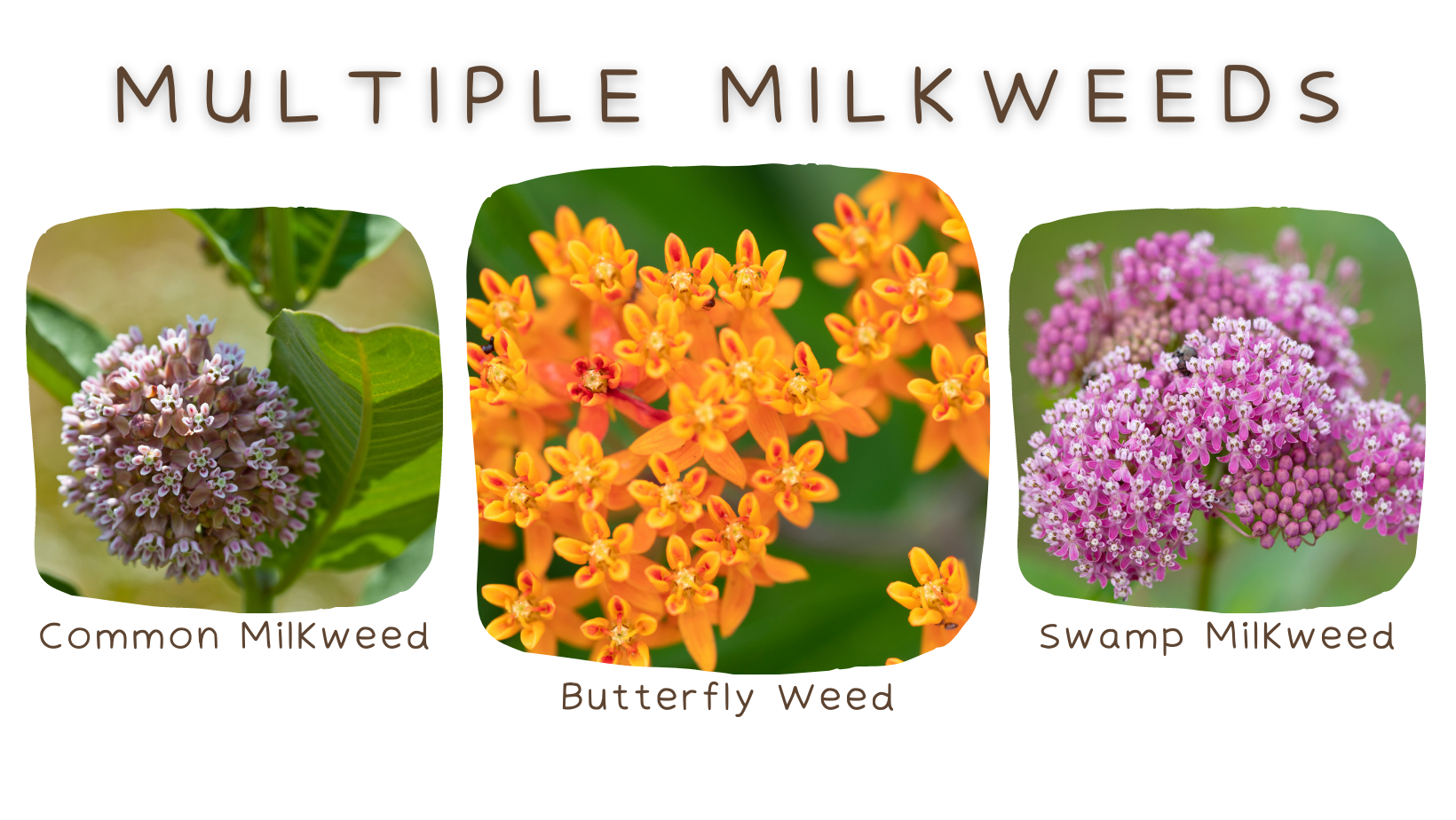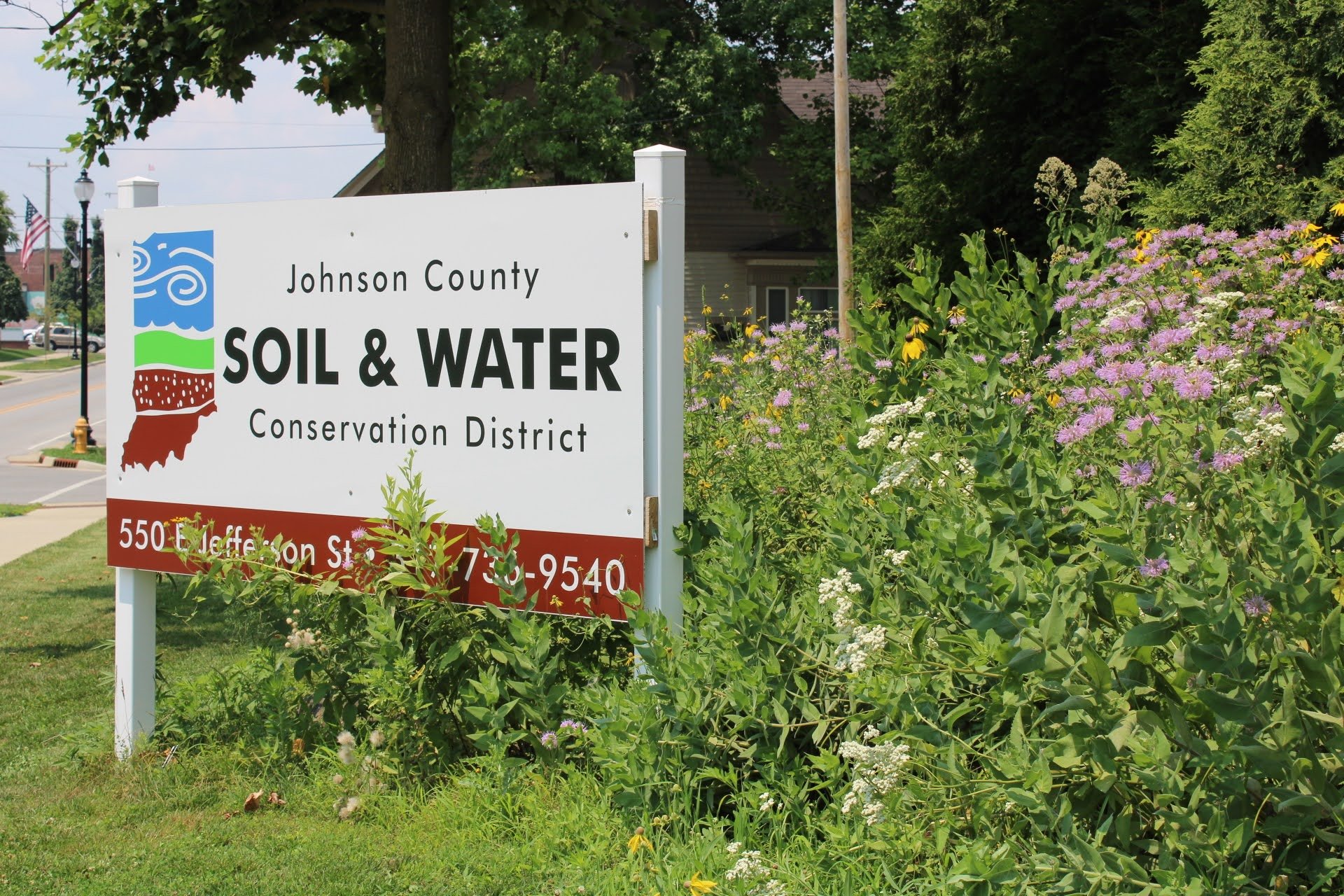Welcome to Johnson County Soil & Water Conservation District!
This library focuses on the relationship between native Milkweeds and Monarch Butterflies because without Milkweed there would be no Monarch Butterflies
Milkweed is the host plant of the monarch butterfly meaning that monarch butterflies can only lay their eggs on milkweed and when they are in their caterpillar stage they can only eat milkweed. Milkweed is toxic to most living things but monarchs eat milkweed BECAUSE it’s toxic making them toxic to predators. A predator, like a bird or mammal, only needs to make the mistake of taking a bite of a monarch caterpillar once and they’ve pretty much learned their lesson. Most will spit out the caterpillar and look for those bagworms we talked about on the Benefits to Birds Library page (spoiler alert if you haven’t been to that one yet…our bad). The Viceroy Butterfly even copy cats the Monarch Butterfly’s coloration to protect themselves from predators because the toxicity of the milkweed is such a good defense. However, habitat destruction has taken away a lot of milkweed plants and caused a 90% decline in the Monarch Butterfly population over the last 20 years. It is estimated that in the United States needs another 1.8 BILLION milkweed plants to reestablish our Monarch Butterfly population back to what it was. So, yeah you could say we’ve got some work to do…
What You Can Do…
Plant Milkweed
If you haven’t been paying attention, we’ll say it again. 1.8 BILLION stems of milkweed is needed to help out the Monarch Butterfly population. While milkweed is not necessary the most cooperative plant in the world, it is still important to plant on your property for all of the reasons that we have already went into. Just make sure to plant in an area of your property where it is free to spread and do as it pleases. However, not to be downer, try to stay away from tropical milkweed. It’s slightly too toxic for monarchs because it’s not a native milkweed. Caterpillars that eat tropical milkweed will not survive so stick to the milkweeds and species that you’re used to. Hint: some good options are above
More than Milkweed
While caterpillars only need milkweed, mature Monarch butterflies need more than milkweed to survive like other native plants. They need sugar and nutrients from nectar found in blooms to feed on. They need constant nectar sources from spring to fall. Late bloomers like New England Aster can be especially helpful for migratory monarchs (sorry, we didn’t get into migration but you can click here to learn more…there’s only so much we can cover, ya know?)
Scroll through the gallery below to see the Soil & Water plants in bloom!
Click on the photos & USDA Fact Sheet links to learn more about the plant species
Need Identification Help? Want to Show Us What is Blooming?
Native Seeds in the Library
Common milkweed and Bundleflower are guaranteed to attract native bumblebees, butterflies, and other pollinators! Click on the images & USDA Fact Sheet links to learn more about these summer blooming species to see if they can find a home on your own property!
Johnson County Soil & Water Conservation District Building
Johnson County Soil & Water Conservation District’s building was landscaped with native plants starting in 2018. The plants were purchased from Ecologic out of Bloomington and the District has added new species every year since. The majority of the species are sun loving species such as Bee Balm, Yellow Coneflower, Royal Catchfly, and of course Common Milkweed. Some native shrubs and trees have been added more recently to help provide more host plant opportunities for native moths and butterflies as well as food sources for native birds. Shrubs and trees surrounding the building include Buttonbush, Serviceberry, Elderberry, Northern Spicebush, Eastern Redbud, and Silky Dogwood. The Soil & Water staff is responsible for the maintaining the plants around the building and enjoy getting out of the office on nice days to manage it.
This year the Johnson County Soil & Water Building was selected to be a Project Wingspan site so more native plants will be added this summer.
You’re already on our website since this is our project so if you want to check what else we’re up to (and there’s quite a bit more) scroll to the top of the page and click on our logo.
A big thank you to Nicole Marshall from Waypoints Designs for completing all of the artwork on the libraries throughout the trail! Click on the button below to learn more!































